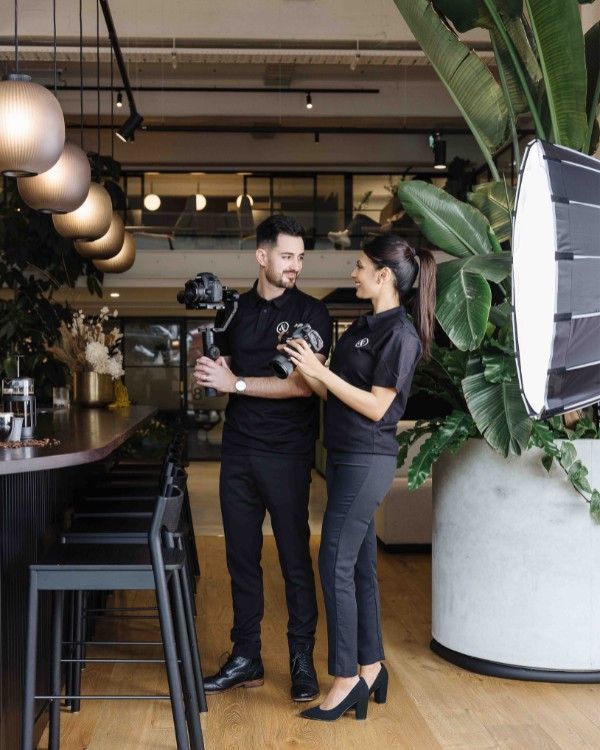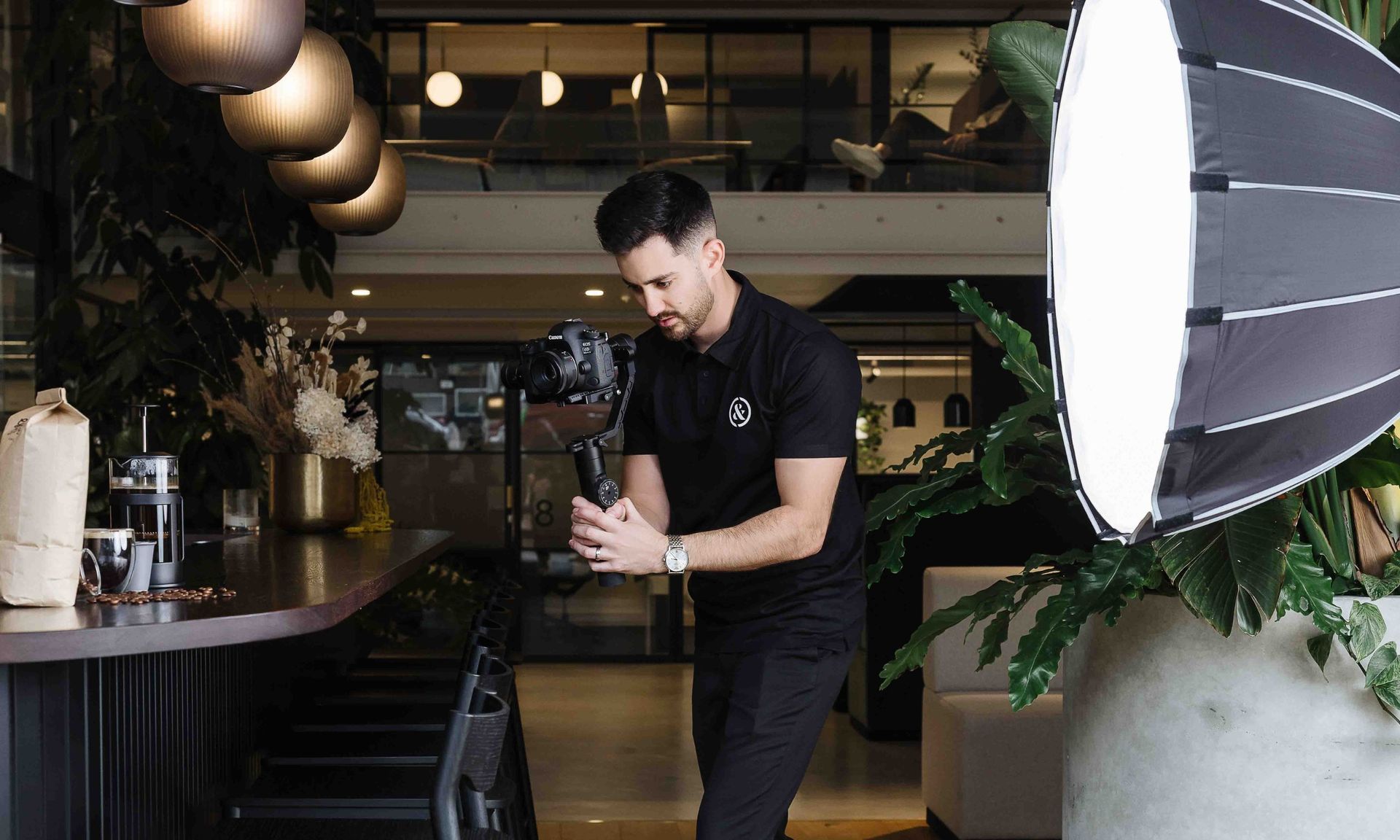What is video marketing & why it matters for SMBs
What is video marketing and why it matters for SMBs
When you're running a small or medium-sized business, marketing can feel like a moving target. Budgets are tight, time is limited, and standing out online is harder than ever. That’s where video marketing comes in. Whether it’s a short clip on social media, a customer testimonial on your website, or a product demo in an email, video gives you a way to connect with your audience quickly and meaningfully.
In this article, we’ll unpack what video marketing actually is, why it’s especially powerful for SMBs, and how you can start using it to build trust, boost visibility, and support your broader digital strategy without overcomplicating the process.
ARTICLE CONTENTS
What this article will cover
There’s more to video marketing than just putting a camera on your product or service. In this article, we’ll walk through what video marketing really means, why it’s such a valuable tool for small and medium-sized businesses, where it fits into your overall marketing strategy, and how to get started - even if you’ve never used video before.
What is video marketing?
An overview of how businesses use video to promote their services, explain what they do, and connect with their audience.
Why video marketing works for SMBs
A look at how video helps small and medium-sized businesses build trust, stand out, and attract more leads.
Where to use video in your marketing strategy
Insights into the key places video can make an impact - from social media and websites to email and paid ads.
Tips to get started with video marketing
Practical ways to start using video in your business, even if you’ve never done it before.
What is video marketing?
Video marketing is the use of video content to promote your business, explain your services, or connect with your audience. That might sound broad and it is, because video can take many forms. From a short, informal Instagram reel to a polished brand story on your homepage, video helps people see and understand what your business is all about.
At its core, video marketing is about communication. It’s a way to show rather than tell, to let potential customers hear your voice, see your team, or watch your product in action. For small and medium-sized businesses, this can make a big impact. You don’t need to be a big brand with a studio budget. In fact, many SMBs find success by keeping it simple, real, and human.
You might use video to answer a common customer question, introduce your services, or give a behind-the-scenes look at how your team works. It’s also a powerful way to share time-sensitive updates, promote an offer, or showcase a real client success story. Each of these builds a different kind of connection, but they all work toward the same goal: helping people feel more confident about choosing your business.
What ties all of these together is the intent: to reach your audience in a more engaging and accessible way than text or static images alone. Video gives people a reason to stop scrolling, pay attention, and start building trust with your business.
Why video marketing works for SMBs
For small and medium-sized businesses, building trust and visibility is everything and video helps you do both. Unlike a block of text or a static image, video gives your audience a glimpse of the real people behind the business. That personal connection can go a long way in industries where trust influences purchasing decisions.
Research backs this up. Effective marketing isn’t just about reaching more people it’s about reaching the right people with the right message (Business.govt.nz). Video helps you do that in a format that’s memorable, emotional, and easy to consume. Whether you’re a plumber, physiotherapist, or high-end home specialist, showing your work in action is more compelling than simply describing it.
There’s also a practical benefit: platforms love video. Social media algorithms tend to prioritise it, and video often performs better in paid ads. Video marketing helps businesses boost engagement and recall which is especially valuable when you’re trying to stay top-of-mind in a competitive market (Ohio
State
University).
Here’s why video suits SMBs so well:
- Builds credibility quickly by showing rather than telling
- Works across multiple platforms (social, email, websites, ads)
- Help to differentiate your brand in a sea of generic content
- It doesn’t have to be expensive or highly produced to be effective
For businesses with limited time and budget, video marketing delivers high impact with relatively low barriers to entry making it a smart investment.

Where to use video in your marketing strategy
Ultimately, the best approach is to think about your customer journey. Where are people discovering your business? What information do they need to feel confident in choosing you? And how can video help you deliver that message in a way that feels clear, relatable, and trustworthy?
Social media
Video marketing works best when it’s integrated into the places your audience already interacts with your business. For many SMBs, that starts with social media. Short, engaging clips on platforms like Facebook, Instagram, or TikTok can showcase your work, introduce your team, or answer common customer questions, all while building familiarity and trust. These don’t need to be overly produced. Often, the most effective videos are the ones that feel genuine and human.
Your website
Your website is another key place to use video. A short welcome video on your homepage or a testimonial video on your service pages can make your business feel more approachable. When people see who they’re dealing with, they’re more likely to reach out or take the next step. Video can also help explain what you do more clearly than text alone, especially if you offer something technical or unique. It adds a layer of clarity and personality that written content often can’t deliver on its own.
Email is often overlooked, but it can be a powerful channel for video. Including a video in your email marketing whether it’s a behind-the-scenes look at your process or a quick update about a promotion, it will help your message stand out in crowded inboxes. It makes the email feel more personal and keeps people engaged longer.
Paid ads
Then there are paid channels, like Google Display or YouTube Ads. These platforms are built for video, and they give you the opportunity to get in front of potential customers while they browse or watch other content. Even short, 15–30 second clips can be effective when they’re targeted and clearly communicate your message.
Tips to get started with video marketing
Starting video marketing can feel intimidating, especially if you’re not used to being on camera or working with visual content. But it doesn’t need to be complicated or expensive. The key is to start with what you already know. Your business, your customers, and the questions you answer every day. That’s your content. From there, it’s about finding simple ways to turn that into video.
Gear
Tip 1
You don’t need fancy gear to begin. A modern smartphone and natural lighting are enough to create clear, watchable content. The most important thing is clarity both in sound and message. Whether you’re walking through a process, showing off a recent job, or talking directly to camera, your goal is to help people understand what you offer and why it matters.
Tip 2
Questions
Think about the types of questions your customers often ask. Those make great video topics. You might film a short explainer about how your service works, introduce your team to show the human side of the business, or capture a quick before-and-after to highlight results. Even a 30-second clip can leave a strong impression if it’s helpful and authentic.
Tip 3
Polished results
If you want a more polished result, for example a video that lives on your homepage or gets used in paid ads, that’s where it may make sense to work with a professional videographer. They can help you craft a story, handle the technical side, and ensure the end product aligns with your brand. But even then, your input is what drives the message. You don’t need to be an actor, you just need to be yourself.
Consistency
Consistency matters more than perfection. The more regularly you show up with valuable, relatable content, the more familiar your audience becomes with your brand. Over time, this builds trust and trust leads to action.
Tip 4
Conclusion
Why video deserves a place in your marketing
Video marketing is one of the most effective ways to communicate who you are, what you do, and why people should choose you. It creates instant connection, helps explain your services clearly, and builds familiarity over time. For SMBs trying to grow in a competitive market, that’s a powerful advantage.
When done well, video strengthens every part of your marketing from your website to your social media, your email campaigns to your paid ads. It allows you to speak directly to your audience and gives them a reason to stop, listen, and remember you. And getting started doesn’t need to be complicated. With the right strategy and support, even simple, authentic videos can drive strong results.
At Clarke & Clarke, we help businesses across New Zealand and Australia use video to grow their brand, reach the right people, and drive more enquiries. If you’re ready to explore what video could look like for your business, we’re here to help.
Frequently asked questions
Still have questions about getting started with video marketing? Here are a few common ones we hear from small and medium-sized business owners.
Do I need professional equipment to start video marketing?
Many businesses begin with a smartphone and natural lighting. The most important thing is clear messaging and good audio. As your needs grow, you can always invest in professional support later.
What kind of videos should I create first?
Start with simple, useful content like a welcome message, client testimonial, or a short explainer about your services. These are great for building trust and answering common questions.
How long should my videos be?
That depends on where you're sharing them. Social media videos often perform well at 15–60 seconds, while website explainers or testimonials can be 1–2 minutes long if the content is engaging and relevant.
Is video really more effective than photos or text?
In many cases, yes. Video helps people retain information and builds a stronger emotional connection with your business.
Can Clarke & Clarke help me create videos for my business?
Yes, at Clarke & Clarke we offer strategy, production, and advertising for businesses that want to use video effectively across digital platforms.
















